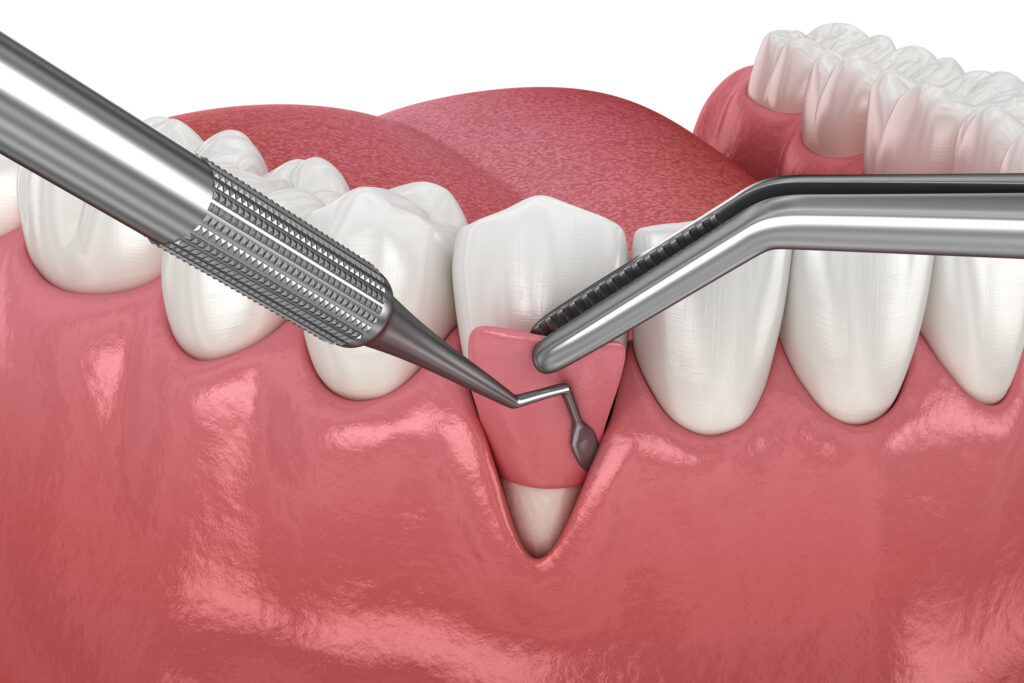
Most people don’t spend much time thinking about their gums—until something goes wrong. But your gums play a critical role in protecting your teeth and keeping your smile healthy. When gums begin to recede, they expose sensitive tooth roots and open the door to serious problems like decay, infection, and tooth loss.
That’s where gum grafting comes in. At Precision Periodontal and Implant Center, we offer this proven treatment to restore gum tissue and help you maintain long-term oral health. But how do you know if you actually need a gum graft? Let’s look at some clear warning signs that it may be time to talk to a periodontist.
1. Your Teeth Look Longer Than They Used To
One of the earliest and most obvious signs of gum recession is when your teeth appear longer. That’s because the gum tissue is literally pulling back, exposing more of the tooth surface. If you notice your smile changing in this way, it’s time for an evaluation.
A gum graft can rebuild the receded gumline, returning your teeth to their natural proportions and protecting the roots.
2. Tooth Sensitivity That’s Getting Worse
Have you noticed sharp zings of pain when you eat or drink something hot, cold, or sweet? Exposed tooth roots are extremely sensitive. Unlike enamel, these roots aren’t built to handle thermal or chemical stimuli.
If you’re experiencing new or worsening sensitivity, gum recession may be the culprit. Gum grafting can cover those roots again, reducing discomfort and protecting them from decay.
3. Exposed Roots or Visible Notches at the Gumline
In advanced cases of recession, you might actually see the darker, yellower tooth roots at the base of your teeth. Sometimes you’ll even see small notches where the enamel ends and the softer root begins.
This isn’t just a cosmetic issue—it’s a sign your teeth are vulnerable to decay and potential tooth loss if left untreated. Gum grafting replaces lost tissue, shielding these vulnerable areas.
4. Frequent Gum Inflammation or Bleeding
Receding gums often go hand-in-hand with gum disease. If you notice red, swollen, or bleeding gums when you brush or floss, it’s a sign of inflammation that can lead to or worsen recession.
While deep cleanings can treat gum disease, gum grafting may be needed to rebuild lost tissue and prevent further progression.
5. Loose Teeth or Shifting Bite
Your gums don’t just cover your teeth—they help hold them in place. When gum tissue and the underlying bone break down, teeth can start to loosen or shift.
If your bite feels different or you notice movement in your teeth, advanced recession may be part of the problem. Gum grafting, in combination with periodontal treatment, can help stabilize your teeth and protect your oral health.
Why Early Evaluation Matters
Gum recession doesn’t heal on its own. The earlier you address it, the simpler and more successful treatment tends to be. At Precision Periodontal and Implant Center, our team performs detailed exams to assess the extent of recession, identify the causes (like gum disease or aggressive brushing), and recommend the best treatment plan.
Gum grafting is a safe, predictable procedure with long-term benefits for your comfort, appearance, and oral health.
Ready to Protect Your Smile?
Don’t wait until recession leads to pain, infection, or tooth loss. If you’re noticing any of these signs, call Precision Periodontal and Implant Center at 424-626-1960 to schedule your consultation. Our expert team is here to help you restore your gum health and keep your smile confident and healthy for years to come.
